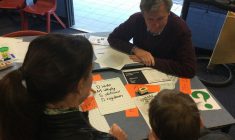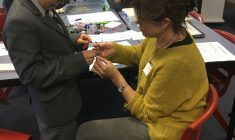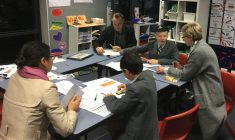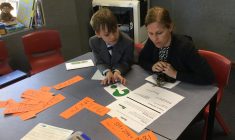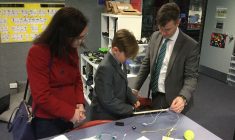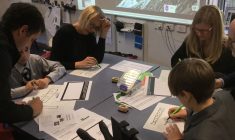Year 6 – Student Led Conference
Student Led Conferences / Mathematical Anxiety
Over the past two weeks, we held the student led conferences. These conferences are an opportunity to share some learning and chat about the work the children are doing in class.
I particularly enjoyed watching the Year 6 groups complete the multiplication grid task in mathematics. I find it fascinating to see how different people approach this type of question. As a staff, we are currently completing the Stanford University Professional Development course led by Jo Boaler. The first few sessions of this course look at maths anxiety and how this impacts learning and what we, as teachers, can do to help in this area.
One task that the Year 6 students worked through with their parents was this multiplication grid.

There was the group who started at the top left-hand corner – no matter what – and worked down the column, and then they moved dutifully across and started down the next. This group, through my observations, was the majority, however, I could split these people into two separate categories – those who wrote a formal algorithm for each question and those who did not. The non-algorithm group had various mental strategies that they employed to get the answer.
The next largest group were those who looked for the easier questions first. They checked out the whole grid and then started to tackled them. As before, they were split into those who used the formal algorithms and those who used different strategies. This group seemed more confident and were able to complete the activity slightly quicker than the first group.
Finally, there were one or two groups who demonstrated a real understanding of multiplication. They approached the task by looking for patterns in the questions as well as the numbers. They quickly realised that the multiplication sums included 12, 22, 32 and 15, 25. The common difference between each was 10. So when multiplying by 7 for instance, 12 x 7, 22 x 7 and 32 x 7 the difference between the answers would be 10 x 7 for each or 70. This group were the most confident and their maths anxiety levels seemed to be the lowest. They also managed to complete the task in the shortest time.
Looking for patterns, having strong understanding of concepts and the ability to interchange these leads to reduced frustration and better understanding. Addressing mathematical anxiety and allowing children to explore a variety of strategies is important. For such a simple task, I was fascinated by how revealing different people’s approaches were and how evident were the levels of mathematical anxiety.
Phil Trethewey – Year 6 Teacher



